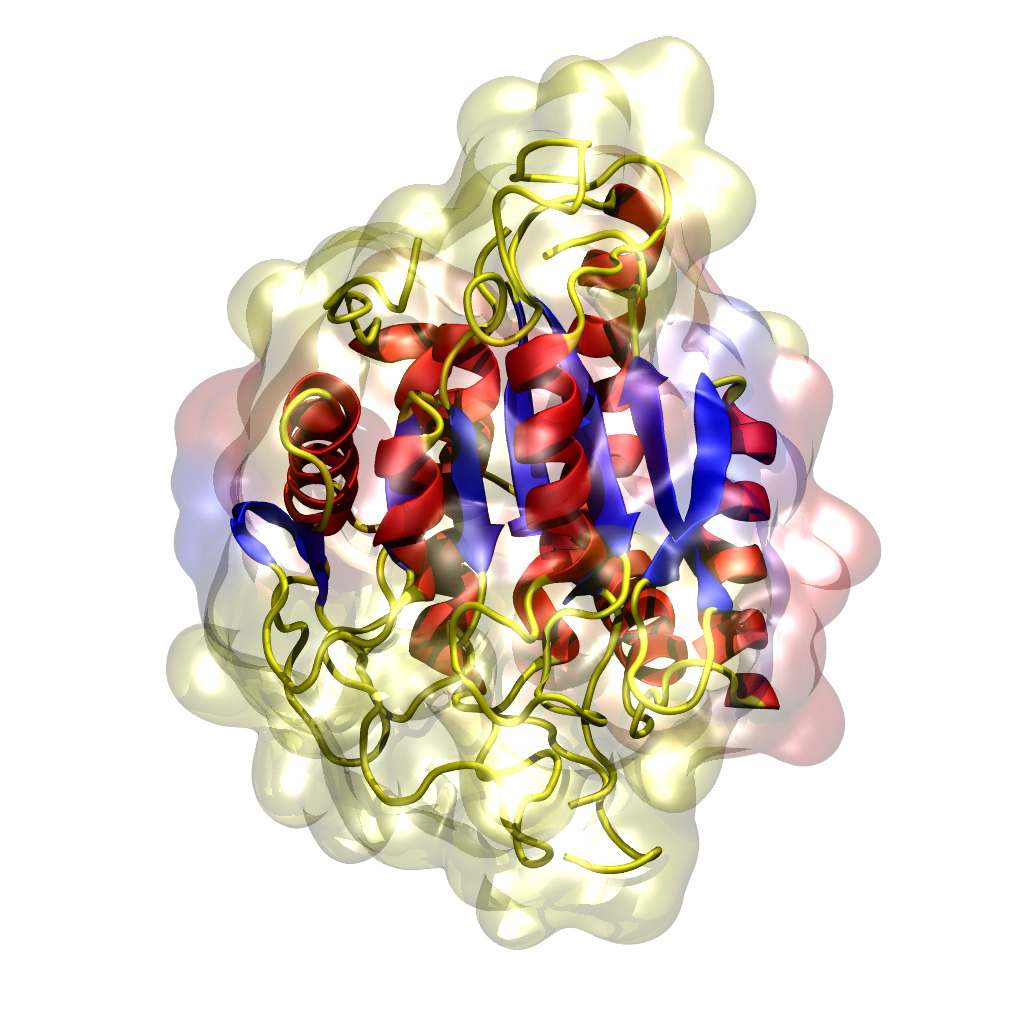
In science fiction, force fields are an invisible barrier that prevent the hero or heroine from their goal.
In science, however, force fields are real, but not so easily felt or experienced as an inhibitor.
Postdoctoral Research Fellow Dr Thomas Lee in UQ’s School of Chemistry and Molecular Biosciences (SCMB) is studying minuscule force fields, under the leadership of Professor Alan Mark. Specifically, the research team is aiming to achieve large-scale validation of biomolecular force fields — the forces acting on atoms.
Understanding the behaviour and organisation of molecules on the nanoscale is essential to further advances in many areas of medicine and biotechnology.
Classical molecular dynamics simulations are widely used to model biomolecular systems for drug design, protein structure determination, and biophysics research in general.
In classical molecular dynamics, the movement of the atoms and molecules is obtained by numerically integrating Isaac Newton’s equations of motion as a function of time. The reliability of such simulations is dependent on the accuracy of the model used to describe the forces acting on the atoms. These models are commonly referred to as “force fields”.
A number of alternative biomolecular force fields have been published. The force fields developed by Prof. Mark’s group at UQ are used by thousands of researchers worldwide.
“Testing and validating these force fields is critical,” said Dr Lee. “The ability to better validate and compare protein force fields supports our work to improve these force fields.
“The question we are trying to address is how much data is needed to reliably distinguish between two force fields in terms of providing a more accurate description of both the protein structure and its dynamics. Specifically, how many different proteins need to be tested and for how long does each need to be simulated?”
Force field validation is time consuming and challenging. As a result, most force field validation studies have focused on just a handful of proteins with limited statistics. “Claims of improved performance have been made based on very little evidence,” said Dr Lee.
To address this, a visiting PhD student Martina Setz from the University of Natural Resources and Life Sciences, Vienna, helped develop methodology and software to automate these simulations and embarked on a large-scale validation project involving a set of 51 protein structures obtained from the open access Protein Data Bank (PDB).
Each protein was simulated using molecular dynamics using four different force fields for three replicates of 15 nanoseconds using the GROMOS molecular dynamics software. The simulations were compared to results from X-ray diffraction and solution Nuclear Magnetic Resonance experiments. However, a detailed statistical analysis showed that even a study of this scale was insufficient to conclusively identify which force field was more reliable.
“Computational throughput is the major limiting factor,” explained Dr Lee. “Even localised protein dynamics such as loop movements occur on timescales of microseconds to milliseconds. The longer we can simulate and the more systems we can consider, the more reliability we can compare to experiment.”
To push to longer time scales, Dr Lee developed a Web-based interface (atb.uq.edu.au) to convert files from GROMOS into a format compatible with Amber, another molecular dynamics software package. Amber’s advantage, however, is that it runs efficiently on Graphics Processing Units (GPUs). A GPU-based high-performance computer (HPC) is essential for efficiently running molecular dynamics simulations.
Initially running jobs on the GPUs available on National Computational Infrastructure’s (NCI) Raijin HPC, Dr Lee and the research team could simulate at a rate of 20 nanoseconds per day for a typical protein. Previously, this had taken weeks.
The research team then gained access to Wiener, UQ’s latest HPC, co-developed by RCC, which contains the most powerful GPUs ever made. The rate of simulation increased to around 80 nanoseconds per day.
“We have now simulated a set of over 50 proteins for 400 nanoseconds each. These simulations are not only enabling us to test accuracy of the force fields we develop but to test the reliability of the available structural models. For example, in some cases the simulations have revealed instabilities in the protein which could be traced to errors in the structure deposited within the PDB,” said Dr Lee.
As the force fields improve, longer timescales are required to validate them. “Wiener is helping us push towards these limits.”
The team is also using Wiener to perform validation studies on a series of small peptides, which have been simulated for up to seven microseconds. Those simulations will help understand the dynamics of protein folding.
A new version of the Amber software, Amber18, was released in March this year. SCMB had a group licence for a previous version, but this was not compatible with Wiener’s newer hardware. RCC’s decision to purchase a Amber18 UQ site licence has allowed the SCMB research team to run their experiments on Wiener.
“Not only is Amber18 compatible with the NVIDIA V100 GPUs on Wiener, but it has additional optimisations that take advantage of the unique features of this hardware,” said Dr Lee.
As RCC bought a UQ site licence, all the university’s staff and students are able to use Amber. It is installed on Wiener, but in principle, Amber can be installed and used on any UQ machine. (People wishing to install Amber on other machines should contact RCC to obtain the files: rcc-support@uq.edu.au.)
“RCC has been of great help to our research, both in enabling access to the Amber GPUs and by providing other resources, such as [QCIF operated cloud computer] QRIScloud,” said Dr Lee.
If you would like to know more about Amber, please contact RCC’s Dr Marlies Hankel: m.hankel@uq.edu.au. For general enquiries about Wiener and RCC’s other HPCs, please contact the RCC Support Desk: rcc-support@uq.edu.au.



